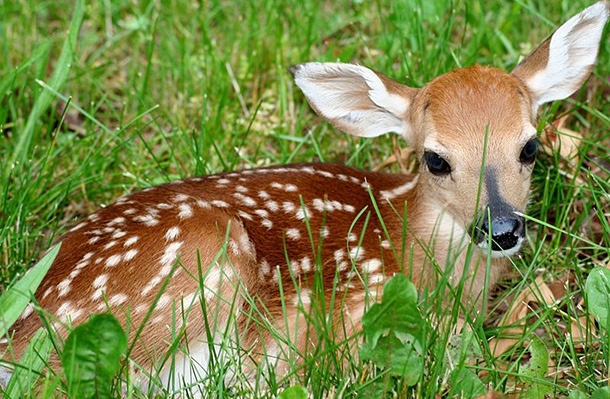
DULUTH – OUTDOORS – Over the next few weeks, there will be young fawns, cubs, pups and wild birds being born. Often people will find wild animals and birds and attempt to help them. That is the wrong thing for people to do.
The Minnesota Department of Natural Resources states, “Newborn fawns may appear abandoned and fragile but their best chance for survival comes when people leave them alone – especially in spring”.
Jeff Lightfoot, DNR northeast regional wildlife manager shares, “While a new fawn may appear helpless, it’s important to keep your distance and not interfere with the doe’s natural instinct for raising its young. Leave fawns alone and let wildlife remain wild.”
Deer rear their offspring differently than humans. Most fawns are born in May and within hours of birth the fawn is led to a secluded spot so it can nurse. With a full stomach, the fawn is content to lie down and rest. If the doe has twins, it will hide the second fawn up to 200 feet away. Then the doe leaves to feed and rest herself, out of sight but within earshot.
In four or five hours, the doe will return to feed the fawns and take them to a new hiding place. Deer follow this pattern for two to three weeks, and only then – when fawns are strong enough to outrun predators – do the young travel much with their mother.
Deer have evolved a number of special adaptations that make this approach to fawn rearing successful. Fawns have almost no odor so predators are less likely to smell them. Their white spotted coats provide camouflage when they are lying on the forest floor. For the first week of life, frightened fawns instinctively freeze, making full use of their protective coloration.
Older fawns remain motionless until they think they have been discovered, and then jump and bound away. A deer’s primary protection from predators is its great speed. Newborn fawns are not fast enough to outdistance predators so they must depend on their ability to hide for protection.
Although these adaptations work well against predators, they don’t work very well with people. For the first few weeks, a fawn’s curiosity may entice it to approach a person who comes upon it.
What’s the right way to handle an encounter with a fawn? Never try to catch it. If it’s hiding, admire it for a moment and then quietly walk away. If the fawn tries to follow, gently push on its shoulders until it lies down and then walk away.
“Leaving fawns alone gives them the best chance for survival,” Lightfoot continued. “Even most orphaned fawns are best suited to survive without human intervention.”
Never feed or place a collar on a fawn or other wild animal. Collaring a wild animal sets it apart from other wild animals, encourages habituation to people and increases the likelihood for harm to the animal.
Feeding Wild Animals Doesn’t Help Them
Conditioning any wild animal to seek human-provided food can cause it to stop seeking natural food sources. Feeding deer can be a problem. Feeding encourages the transmission of animal disease such as chronic wasting disease, which can be spread through saliva when multiple deer eat from the same food source such as feeders or piles of feed left on the ground. Feeding deer can concentrate animals in feeding areas which makes them more susceptible to predation, vehicle collisions or other unwanted human interactions. What begins as a good intention to help the animal ultimately promotes disease and lessens the animal’s ability to survive independently.
“Not all animals survive, and some mortality is a natural occurrence. If you have a question about an interaction with a wild animal, contact your local DNR area wildlife office for suggestions,” said Lightfoot. “In most cases, letting nature take its course is the best advice.”






